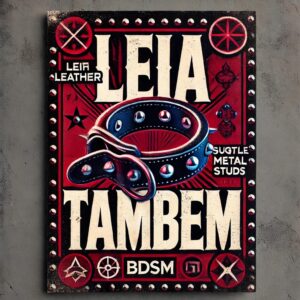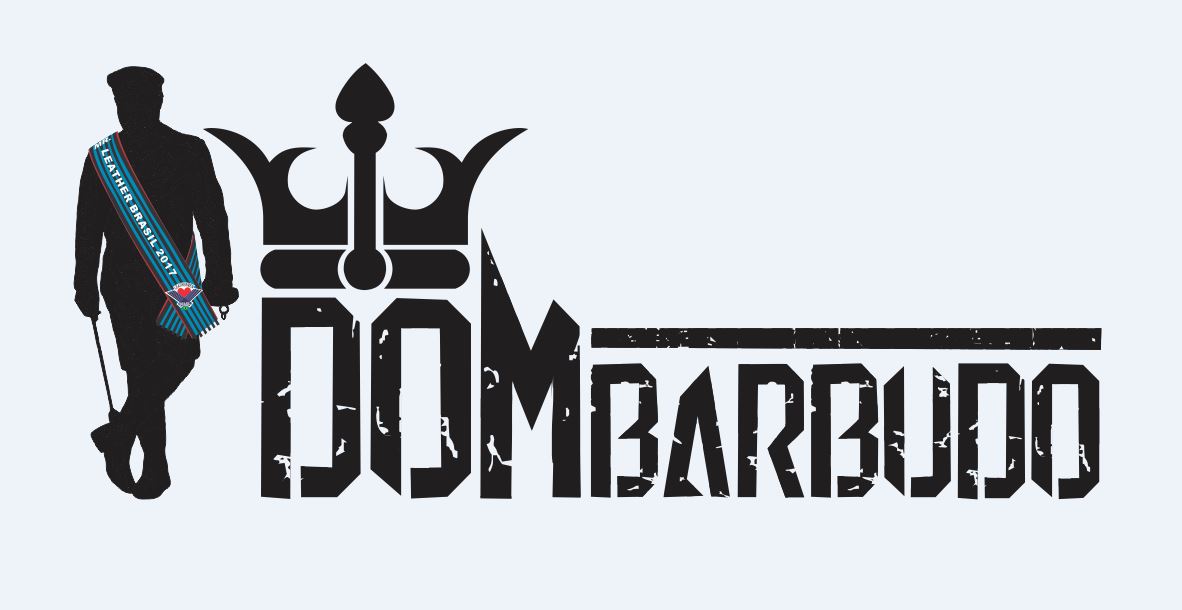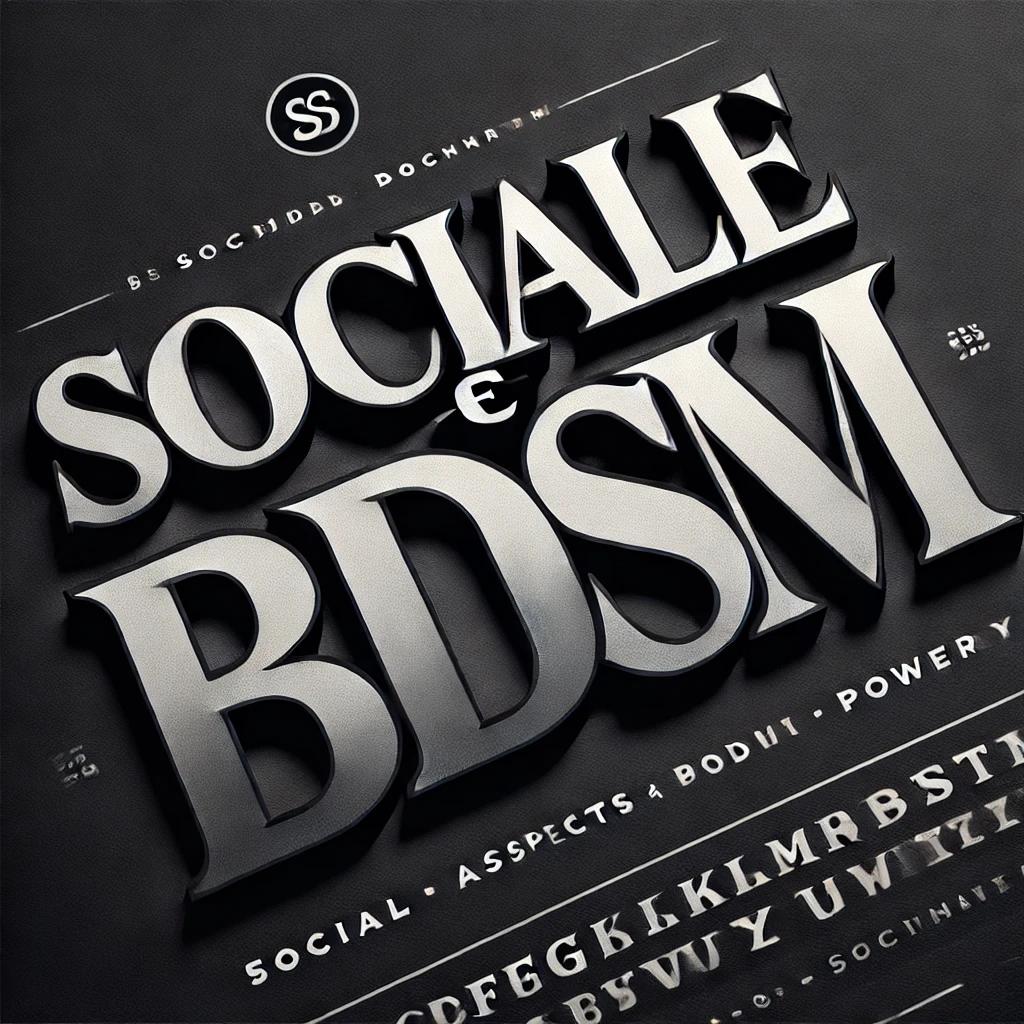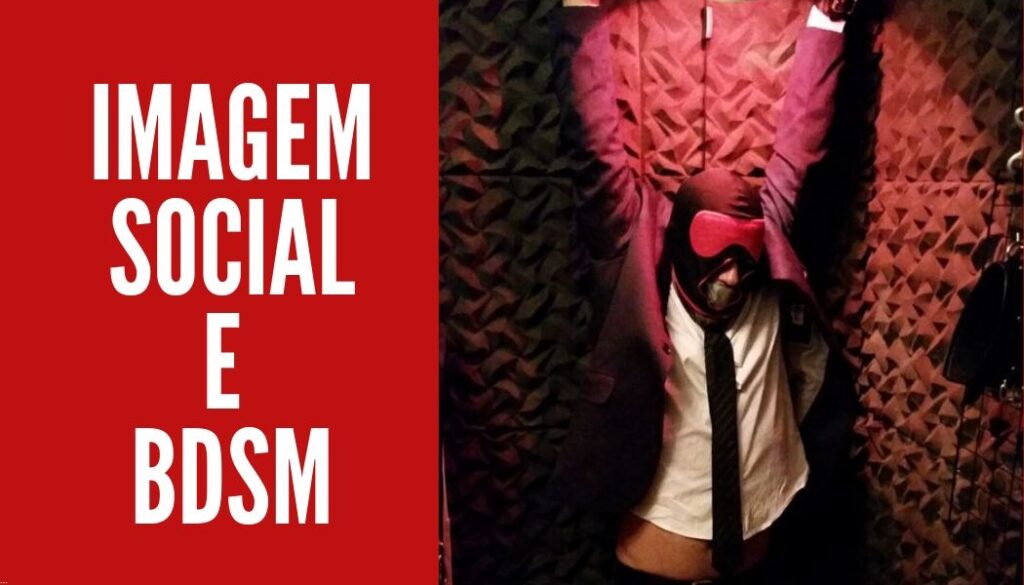📖 1 – TERMO E CATEGORIA
• Nome do Termo: IMAGEM SOCIAL E BDSM
• Categoria: CONCEITO
🔑 2 – PALAVRAS-RELACIONADAS
• Aparência no BDSM, identidade fetichista, status social na comunidade BDSM, códigos visuais, reconhecimento dentro da cena
• Inglês: Social Image in BDSM, Fetish Identity, BDSM Status, Visual Codes, Recognition in the Scene
🔠 3 – DEFINIÇÃO
Imagem social no BDSM refere-se à maneira como um praticante se apresenta e é percebido dentro e fora da comunidade BDSM. Inclui vestimentas, postura, linguagem corporal e comportamento, refletindo o papel assumido dentro da dinâmica fetichista.
🔎 4 – SIGNIFICADO
No universo BDSM, a imagem que um Dominador ou submisso projeta pode influenciar diretamente a forma como ele é tratado. Um Dominador com postura firme, roupas de couro e um olhar seguro transmite autoridade e experiência, enquanto um submisso pode usar símbolos de pertencimento, como colares ou posições corporais que reforcem sua entrega.
Fora da cena, a questão da imagem social é ainda mais complexa. Muitos praticantes optam por manter sua identidade BDSM discreta, enquanto outros a integram totalmente à sua vida cotidiana, seja através do estilo de vestimenta, códigos visuais sutis, ou até mesmo pela forma como interagem socialmente.
🔗 5 – APLICAÇÃO
• Na comunidade BDSM: A forma como um praticante se veste ou se comporta em eventos influencia seu reconhecimento e status
• No visual e na moda fetichista: Couro, látex, uniformes e acessórios específicos são marcadores visuais de identidade
• Na postura e linguagem corporal: Dominadores costumam manter uma presença imponente, enquanto submissos podem demonstrar obediência e respeito através da postura
• No ambiente profissional e social: Alguns praticantes mantêm suas preferências privadas, enquanto outros expressam sua identidade BDSM de forma sutil ou aberta
🧠 6 – IMPACTO MENTAL, FÍSICO E EMOCIONAL
A forma como um praticante se percebe e é percebido pela comunidade BDSM pode afetar diretamente sua confiança, identidade e interações. Dominadores podem sentir que sua postura e visual reforçam sua autoridade, enquanto submissos podem experimentar um profundo senso de pertencimento ao expressarem sua submissão visualmente.
A imagem social também influencia a aceitação e segurança dentro da comunidade. Um submisso bem treinado e com postura adequada pode ser mais facilmente reconhecido e valorizado, enquanto um Dominador com aparência segura e postura firme tende a atrair mais respeito e submissão genuína.
📢 7 – RELAÇÃO COM OUTROS TERMOS
• Cultura Leather – Estilo de vestimenta e comportamento fortemente ligado à hierarquia e respeito na cena BDSM
• Símbolos e Acessórios BDSM – Uso de colares, braceletes, anéis e outros itens para sinalizar papéis e dinâmicas
• Etiqueta BDSM – Como a imagem social influencia interações e status dentro da comunidade
🔒 8 – SIMBOLOGIA E REPRESENTAÇÃO NO BDSM
• Roupas e acessórios fetichistas como couro, látex e colares representam diferentes papéis e níveis de compromisso
• Postura e comportamento determinam o reconhecimento dentro da comunidade BDSM
• A maneira como um Dominador se apresenta pode influenciar diretamente a submissão e obediência que recebe
🤝 9 – NEGOCIAÇÃO
A imagem social deve ser considerada tanto em eventos BDSM quanto na vida cotidiana. Alguns praticantes preferem manter uma identidade discreta, enquanto outros desejam expressar sua identidade BDSM publicamente. Conversar sobre limites de exposição social é essencial em relacionamentos D/s que envolvem apresentações públicas.
💊 10 – CUIDADOS ANTES E DEPOIS
• Manter coerência entre postura e comportamento dentro da cena BDSM para evitar descredibilização
• Cuidar da escolha de símbolos e roupas fetichistas para garantir que transmitam a mensagem desejada
• Estar preparado para possíveis julgamentos sociais caso decida expressar abertamente sua identidade BDSM
🚀 IMPACTO FINAL
A imagem social no BDSM não é apenas sobre roupas ou acessórios—é sobre postura, comportamento e a forma como o praticante é reconhecido e respeitado na comunidade.
🔍 PERGUNTAS COMPLEMENTARES – IMAGEM SOCIAL E BDSM
1. Um Dominador real deve esconder seu estilo de vida ou usar isso como poder?
Depende de quem é o Dominador — de verdade. Se ele ainda precisa esconder, talvez não domine nem a si mesmo. A verdadeira imagem social de um Dominador não precisa gritar BDSM. Ela se impõe com postura, voz, olhar e atitude. Um homem que sabe o poder que tem não precisa esfregar isso em ninguém. Mas também não abaixa a cabeça. Ele domina no terno, no jeans ou no couro. Porque o BDSM não é fantasia. É presença.
2. Como lidar com o medo do julgamento social ao viver uma relação D/s?
Julgamento vem de quem nunca foi escolhido pra servir ou ser servido. Se o teu medo de opinião externa é maior do que teu desejo de controlar ou se entregar, talvez você ainda esteja brincando de BDSM. Relação D/s verdadeira se vive entre quatro paredes — e se reflete nos olhos, na disciplina e na confiança de quem está envolvido. A opinião dos outros é ruído. E submissão é silêncio obediente.
3. É possível manter uma carreira pública e ser Dominador ou submisso sem conflitos?
Claro. A chave é entender que Dominação e submissão são dimensões internas, não slogans estampados na testa. Um CEO pode passar o dia assinando contratos e chegar em casa pra se ajoelhar. Um juiz pode dominar a corte e ser dominado à noite. Não há conflito quando se tem clareza de papéis e maturidade emocional. BDSM bem vivido só melhora a performance — em qualquer cenário.
4. O BDSM precisa ser assumido publicamente pra ser real?
Não. O que precisa ser real é o efeito que causa em quem está com você. A intensidade da tua dominação ou da tua entrega não depende de likes, perfis ou posts em rede social. O BDSM é vivido na carne, na mente e na alma — não na vitrine. Quem precisa de validação pública pra se sentir Dominador ou submisso ainda está em fase de personagem.
5. Como o BDSM pode influenciar a forma como um homem se posiciona no mundo?
Quando um homem vive o BDSM de forma plena, ele anda diferente. Fala diferente. Olha diferente. Ele descobre a autoridade natural. Aprende a ouvir com intenção. A mandar com precisão. A se impor sem violência. A dominar com classe. Isso muda tudo: nos negócios, nas relações, no sexo e na presença. O BDSM real não é só um estilo de vida — é uma escola de postura, comando e autodomínio.
6. Há um risco da imagem social BDSM cair no estereótipo ou virar fetiche superficial?
Sim — quando é mal vivida. Quando o cara acha que usar uma coleira no sub é mais importante que saber por que ela está lá. Quando a estética vira mais importante que o psicológico. BDSM não é cosplay. Não é performance de rede. É hierarquia, controle, entrega e intensidade. Se você vive isso como fetiche vazio, a imagem social vai ser só isso mesmo: um personagem com zero profundidade.

📖 1 – TERM AND CATEGORY
• Term Name: SOCIAL IMAGE AND BDSM
• Category: CONCEPT
🔑 2 – RELATED KEYWORDS
• Appearance in BDSM, fetish identity, social status in the BDSM community, visual codes, recognition in the scene
• English: Social Image in BDSM, Fetish Identity, BDSM Status, Visual Codes, Recognition in the Scene
🔠 3 – DEFINITION
Social image in BDSM refers to how a practitioner presents themselves and is perceived both within and outside the BDSM community. It includes clothing, posture, body language, and behavior, reflecting the role assumed within the fetish dynamic.
🔎 4 – MEANING
In the BDSM world, the image a Dominant or submissive projects can directly influence how they are treated. A Dominant with a firm posture, leather attire, and a confident gaze exudes authority and experience, while a submissive may wear symbols of belonging, such as collars or body positions that reinforce their submission.
Outside the BDSM scene, the issue of social image becomes even more complex. Many practitioners choose to keep their BDSM identity private, while others fully integrate it into their daily lives—through fashion choices, subtle visual codes, or even their social interactions.
🔗 5 – APPLICATION
• Within the BDSM community: The way a practitioner dresses or behaves at events influences their recognition and status
• In fetish fashion and visuals: Leather, latex, uniforms, and specific accessories serve as visual identity markers
• In posture and body language: Dominants tend to maintain an imposing presence, while submissives may demonstrate obedience and respect through their posture
• In professional and social settings: Some practitioners keep their preferences private, while others subtly or openly express their BDSM identity
🧠 6 – MENTAL, PHYSICAL, AND EMOTIONAL IMPACT
How a practitioner perceives themselves and is perceived by the BDSM community can directly affect their confidence, identity, and interactions. Dominants may feel that their posture and visual presence reinforce their authority, while submissives can experience a deep sense of belonging when expressing their submission visually.
Social image also influences acceptance and security within the community. A well-trained submissive with the appropriate posture may be more easily recognized and valued, while a Dominant with a strong appearance and firm posture tends to attract more respect and genuine submission.
📢 7 – CONNECTION TO OTHER TERMS
• Leather Culture – A style of dress and behavior strongly linked to hierarchy and respect in the BDSM scene
• BDSM Symbols and Accessories – The use of collars, bracelets, rings, and other items to signal roles and dynamics
• BDSM Etiquette – How social image influences interactions and status within the community
🔒 8 – SYMBOLISM AND REPRESENTATION IN BDSM
• Fetish clothing and accessories such as leather, latex, and collars represent different roles and levels of commitment
• Posture and behavior determine recognition within the BDSM community
• The way a Dominant presents themselves can directly influence the submission and obedience they receive
🤝 9 – NEGOTIATION
Social image should be considered both in BDSM events and in everyday life. Some practitioners prefer to maintain a discreet identity, while others wish to express their BDSM identity publicly. Discussing boundaries regarding social exposure is essential in D/s relationships that involve public presentations.
💊 10 – PRE AND POST-SESSION CARE
• Maintain consistency between posture and behavior within the BDSM scene to avoid loss of credibility
• Be mindful when choosing fetish symbols and clothing to ensure they convey the intended message
• Be prepared for potential social judgment if choosing to express BDSM identity openly
🚀 FINAL IMPACT
Social image in BDSM is not just about clothing or accessories—it’s about posture, behavior, and how a practitioner is recognized and respected within the community.
🔍 COMPLEMENTARY QUESTIONS – SOCIAL IMAGE AND BDSM
1. Should a real Dominant hide his BDSM lifestyle or use it as power?
That depends on what kind of Dominant he really is. If he still needs to hide, maybe he hasn’t fully mastered himself yet. The true social image of a Dominant doesn’t need to scream BDSM. It commands presence through posture, tone, eye contact, and authority. A man who knows his power doesn’t need to flash it. But he also doesn’t bow to anyone. He dominates — whether in leather, jeans, or a tailored suit. BDSM isn’t costume. It’s presence.
2. How should one deal with the fear of social judgment when living a D/s dynamic?
Judgment comes from those who’ve never been chosen to serve or be served. If your fear of outside opinion is stronger than your desire to control or surrender, maybe you’re still playing with the idea of BDSM. A real D/s dynamic is lived behind closed doors — and reflected in obedience, gaze, discipline. The world’s opinion is just noise. Submission is silent. And power doesn’t ask permission.
3. Can someone hold a public career and still be a Dominant or submissive without conflict?
Absolutely. The key is understanding that Domination and submission are inner forces, not slogans on your forehead. A CEO can sign million-dollar deals and kneel at night. A judge can dominate a courtroom and be owned at home. There’s no conflict when roles are clear and emotional maturity is in place. Lived well, BDSM enhances every other part of life — including performance, presence, and leadership.
4. Does BDSM need to be publicly assumed to be real?
No. What needs to be real is the effect you have on the one kneeling for you — or commanding you. The intensity of your domination or surrender has nothing to do with likes, bios, or digital theater. BDSM is lived through skin, mind, and psyche — not hashtags. If you need public validation to feel like a Dom or a sub, you’re still in rehearsal mode.
5. How can BDSM influence the way a man positions himself in the world?
When a man embraces BDSM fully, everything about him changes. The way he walks. Talks. Looks. He discovers natural authority. Learns to command with precision. To listen with dominance. To impose without aggression. BDSM isn’t just a lifestyle — it’s a masterclass in posture, psychological command, and masculine presence. It elevates him in business, sex, and everyday power.
6. Can the social image of BDSM become a stereotype or shallow fetish?
Yes — when it’s lived poorly. When a guy thinks a collar is more important than why it’s worn. When the aesthetics matter more than the psychology. BDSM isn’t cosplay. It’s not a scene. It’s hierarchy, control, surrender, and mind control. If you treat it like a hollow kink, that’s what your image becomes: surface-level, performative, forgettable.









